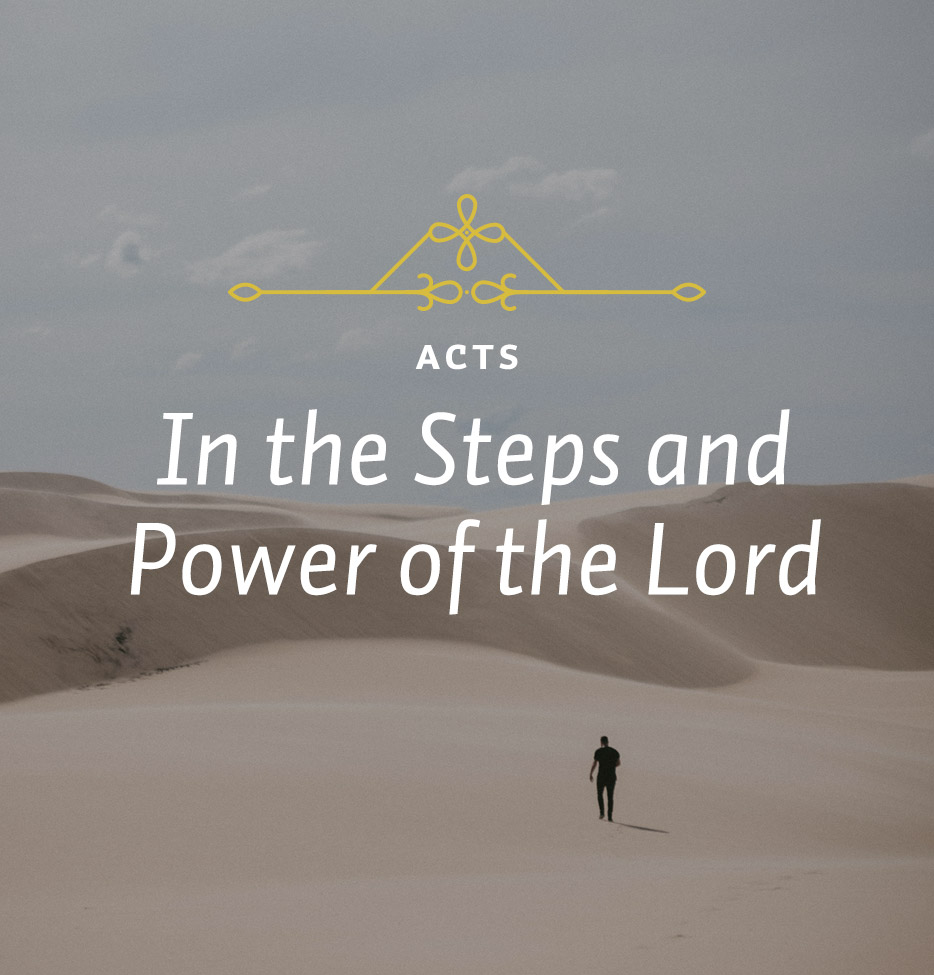The passage we are studying tells two stories about Peter, just before God sends him to Cornelius. They suggest a preparation of Peter for that breakthrough.
To begin with, Peter was doing what he should have been doing in these days, and it is to his credit. Many (probably most) of the apostles had remained in Jerusalem, I think wrongly. Jesus had sent them into all the world with the Gospel (Matt. 28:18-20; Acts 1:8), but they had gotten entrenched in Jerusalem. However, even if the others were wrong in this, Peter at least was not making that mistake. He was the chief apostle to the Jews. So he was going around visiting the various Jewish communities into which the Gospel had spread. He had already been to Samaria examining the situation there. Now he was making his way to the coast, which is where Philip had been. This was fairly early in church history, but already there were churches there. We see this in the story, because it is not just an isolated individual here and there whom Peter visits but actual bodies of believers.
1. The healing of Aeneas. The first place Peter visited was Lydda, the Lud of the Old Testament. Here there was a paralyzed man named Aeneas. He had been confined to bed for eight years. But Peter addressed him in the name of Jesus, crying, “Jesus Christ heals you. Get up and take care of your mat.” The healing was an echo, perhaps consciously on Peter’s part, of Jesus’ healing of the paralytic man early in His ministry. Jesus had said, “I tell you, get up, take your mat and go home” (Mark 2:11).
2. The raising of Dorcas. The second of these stories is told at greater length and has some interesting details. It concerns bringing a woman named Dorcas back to life after she had died, and it takes place in the ancient city of Joppa, today’s Jaffa.
Joppa was a Jewish community. That is why Peter had gone there. But when this woman died, we notice that they did not bury her right away. Why not? When Ananias and Sapphira died they were buried that very day. Why were Ananias and Sapphira buried at once but Dorcas was not? It is because there was a law in Jerusalem that a body was not allowed to remain around for a second day. It had to be buried at once. Beyond Jerusalem the normal period between death and burial was three days. This was Joppa’s custom. So it was during these three days that those who knew and loved Dorcas sent for Peter, undoubtedly expecting him to do a miracle.
There is another interesting detail in verse 39. When Peter went to the room where they were weeping and crying, the women showed him the robes and other clothing that Dorcas had made while she was still alive. That is a nice touch, isn’t it? It was the women, those who did similar things, who were appreciative of Dorcas’ good deeds.
Like the earlier story about Aeneas, there are also parallels in this story to things Jesus had done, in this case to two of the resurrections He had performed during His ministry. The obvious one is to John 11, which tells of the raising of Lazarus. Jesus, like Peter, was not present when His friend Lazarus died. His sisters had to send for Him, and the resurrection took place after a considerable passage of time. This was Peter’s situation too. So as Peter was making his way to Joppa, where Dorcas had lived, he was probably wondering what God might accomplish on this occasion and probably also thinking of the time Jesus raised Lazarus.
When he got to Dorcas’ house there were circumstances that probably reminded Peter of the other resurrection in which Jesus was involved. It is told in Mark 5 and concerns the raising of the daughter of Jairus. It, too, was in an upper room. The people there were also distressed and wailing. On that occasion, Jesus put them out so there would be quiet. Then he called to the girl, a young girl who was only twelve years old, “Little girl, I say to you, get up!” (v. 41).
When Peter saw the mourners and Dorcas lying in the upper room, that story must have come immediately to his mind. So he followed in Jesus’ steps. He asked the women to leave. Then he knelt and prayed. He must have prayed fervently. He was an apostle, of course. God had been doing miracles through him. Still, it must have required a great deal of faith for Peter to get up from his knees, turn to the dead woman and say, as Jesus had done with Jairus’ daughter, “Tabitha, get up.”






